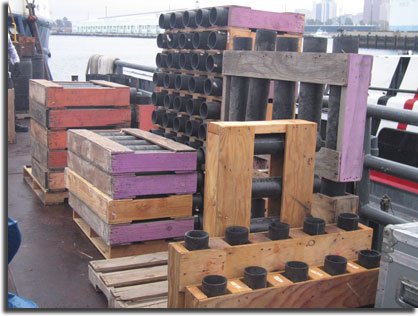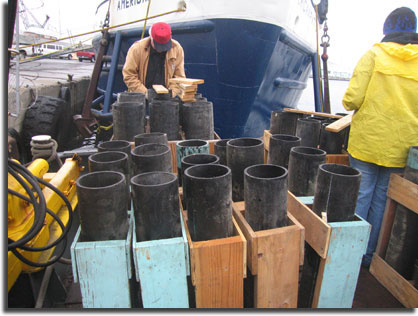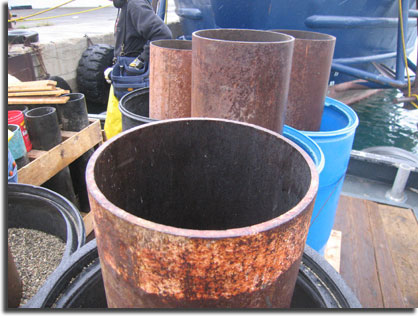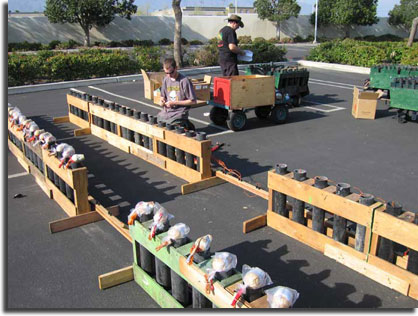How do you organize mortar racks for a show?
In general, because of the way the racks are secured together, you must group racks of the same caliber.
If your shooting a Pyrodigital (PD) show using a computerized firing system, all the racks of the same caliber can be grouped together and the computer picks and chooses which group to shoot from. This makes setup much easier. Racks can then be grouped in sets of 4 or 5, which saves time of not having to cleat each individual rack (although there are other methods to minimize this).
For safety reasons, we limit the number of guns that can exist in any given group of racks, and leave working space between these groups. You will never have the need to group more than 5 racks together for any part of your display. This way, if a shell malfunctions in the mortar and blows the rack apart, it minimizes the number of other loaded guns which can be damaged in the explosion. | |
|
How do you secure the mortar racks for the show?
We secure racks by "cleating" them together. What the heck is cleating?! It's quite simple actually. It involves taking a few pieces of wood (cleats) and nailing them to the racks. The name of the game is make the racks stable. If you have ever seen one of the videos of the mortars firing during a show, a finale in particular, you can see its extremely violent. So your cleating job has to ensure that the racks will not tip over or come apart while their jumping around. If your cleating an individual rack, or even two of them together, you will take one cleat across the bottom of the rack, making sure it is sitting firmly on the ground, and place two nails (in each rack if more than one are being cleated together) and then one cleat across the top (if more than one are being put together), with one nail in each rack. So, two nails in the bottom of each rack and one in the top of each rack. We use duplex nails (nail with two heads) so that we can pull the nails out with ease at the end of the show during cleanup. Finale racks are slightly different since they are usually cleated together at an angle (like a fan) so that you get a good spread and fill the whole sky. Same cleating method applies (two nails in the bottom, one in the top), with the one difference of fanning.
After all the racks are built, and BEFORE you layout or load your aerial shells, you must clean all the guns to ensure no debre would prevent a shell from sitting all the way at the bottom of the gun, otherwise, your shell may not lift high enough before breaking, giving you a "low break." Be sure to watch the training videos above.

 

 |